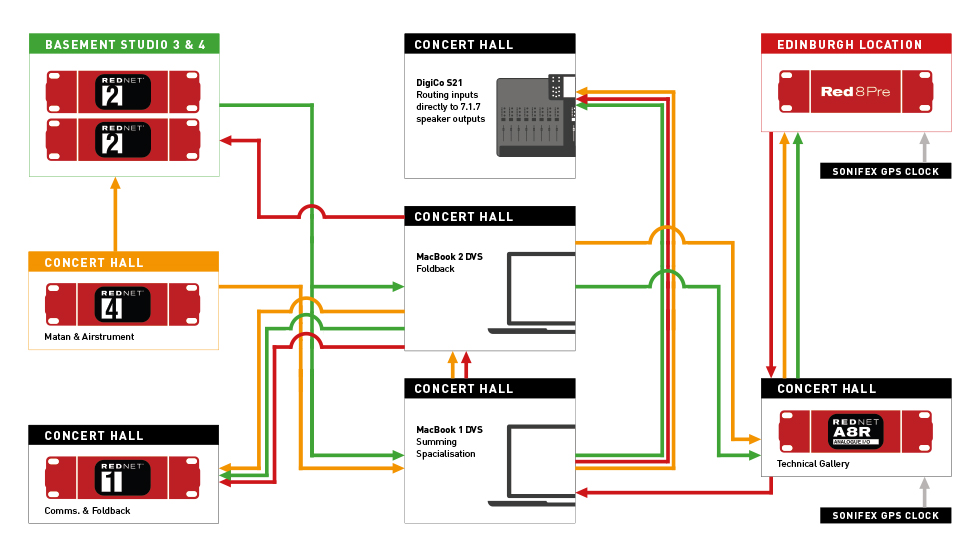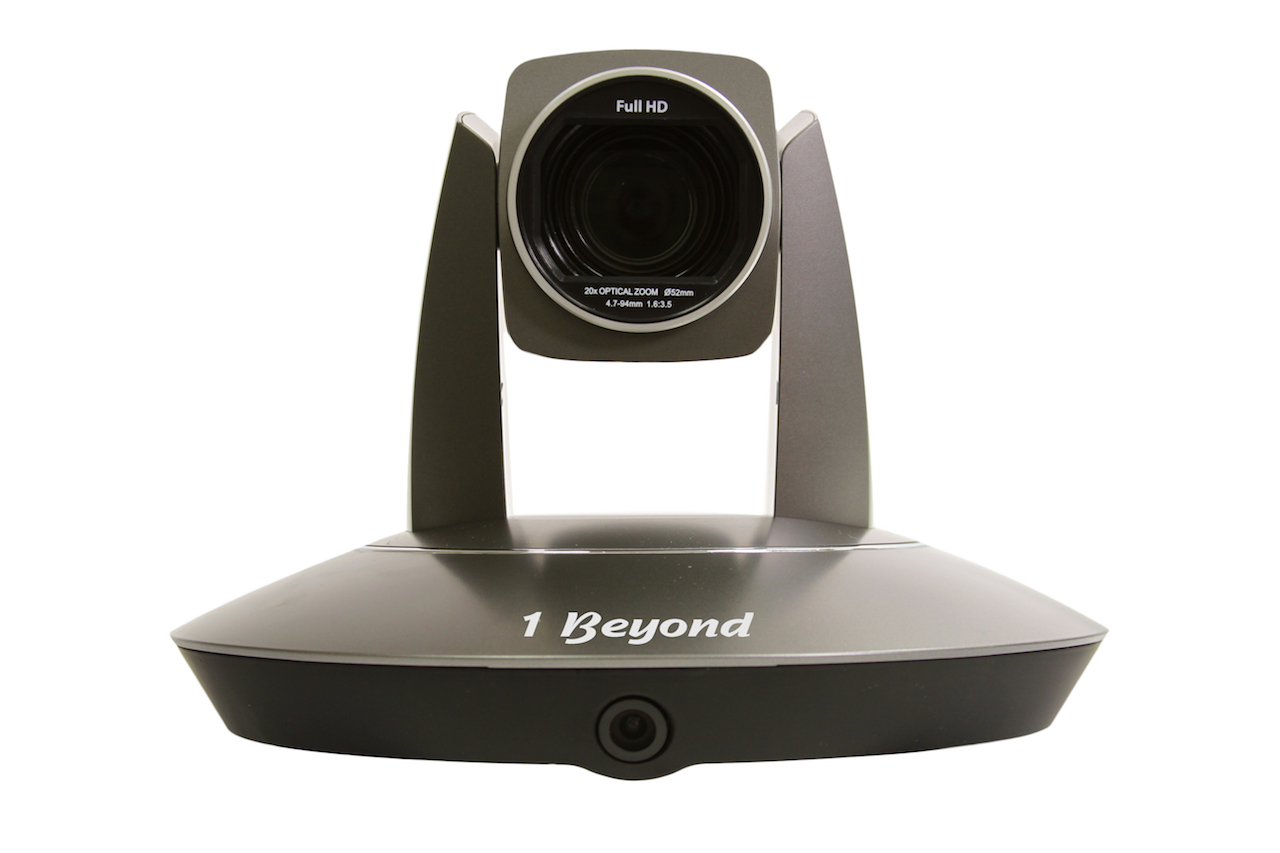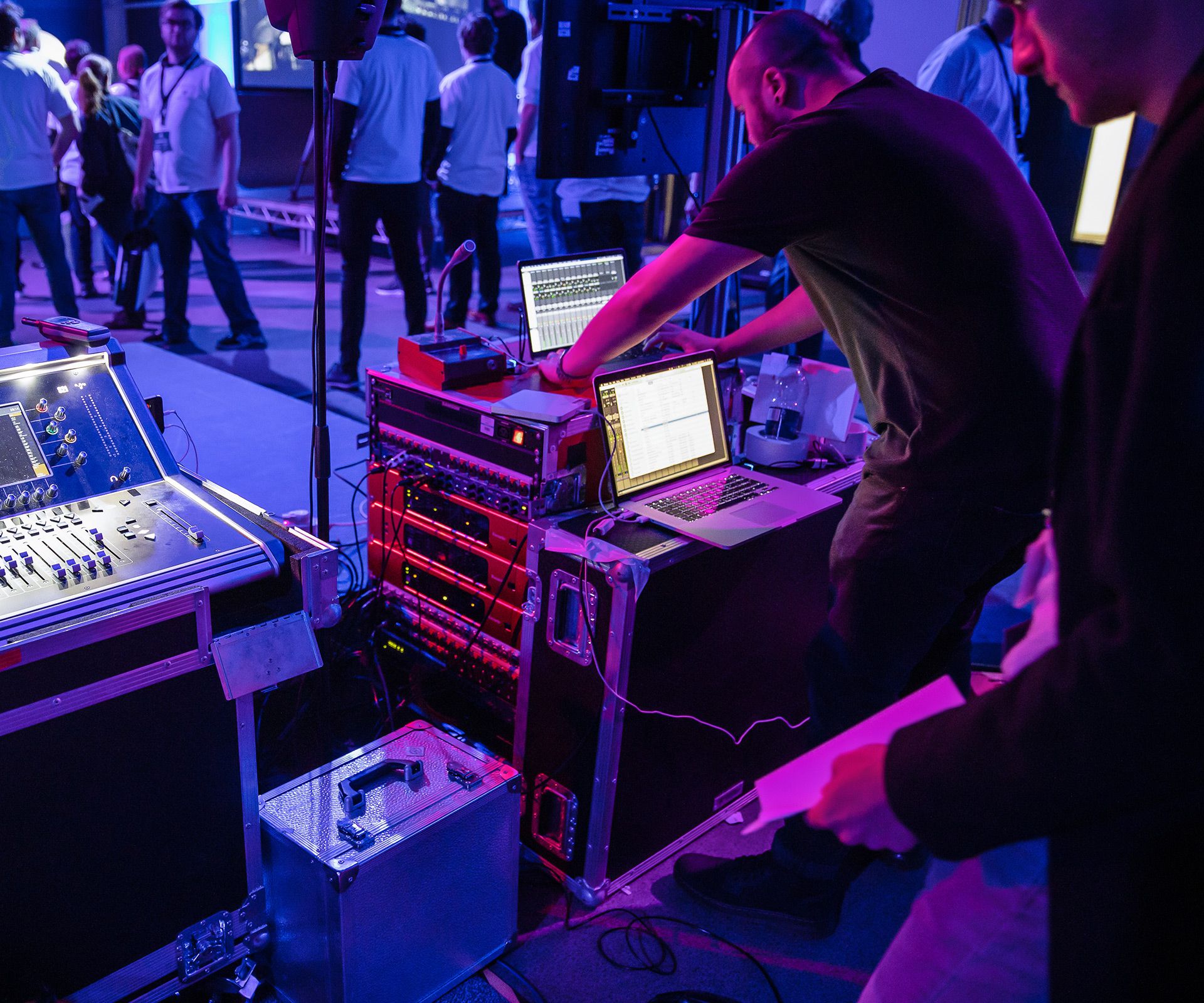Remote learning: How to stream a multi-site orchestra
Remote learning and music is long-distance, real-time and full res

Remote learning and it's complications are front of mind for all educators. Among the big challenges is how you have musicians who are hundreds of miles apart play together in sync. Let's take a look at an application that found a way.
The annual Innovation In Music conference is an international music event that brings together researchers and professionals who are shaping the future of music education and industry. The event welcomes academics, artists, producers, engineers, music industry professionals, and manufacturers to come together and hear presentations and discussions on a wide range of topics.

Pro Audio + Streaming Newsletter. Our editors are experts in pro audio, video, and streaming. Get daily insights, news, and professional networking. Subscribe to Sound & Video Contractor Pro AV Today
The most recent conference was held at the University of West London’s Ealing Campus and covered a number of topics including music production, performance and composition, studio technology innovation, and platforms for music sale, streaming and broadcast, to name a few.
Dr. Paul Ferguson, associate professor of audio engineering from Edinburgh Napier University, has been exploring the potential of long-distance creative collaboration over IP networks.
This year’s conference keynote was sponsored by Dante licensee Focusrite Pro, which was very interested in exploring the possibility of using their products and Dante technology over a long distance.
“My area of research for several years has been in looking at remote music performance and production over high-speed networks. We’re very fortunate that in the education world, we’re connected by high-speed networks for research purposes,” said Ferguson. “At Napier, we use Dante to link studios and resources here on campus, but I always predicted that local and long-distance collaboration could come together.”

At the conference, Ferguson and Edinburgh Napier University co-researcher Dr. Dave Hook worked with the London team to demonstrate a performance featuring a total of eight musicians playing together. Several musicians were spread out in different spaces around the University of West London — all using Dante enabled Focusrite RedNet interfaces — and one of the musicians was in Edinburgh, Scotland, some 400 miles away.
Are you a pro? Subscribe to our newsletter
Sign up to the TechRadar Pro newsletter to get all the top news, opinion, features and guidance your business needs to succeed!
As far as we know, this was the first time that Audinate’s Dante was used to connect performers over a conventional network of such a distance,” said Ferguson. “This was a real game-changer because it demonstrates that studios, education establishments, and performers ultimately will be able to collaborate over a great distance and use Dante just as they are now in connecting resources locally.”
The workflow demonstrated at the Innovation In Music conference has since been successfully repeated between Edinburgh and Berlin, a distance of more than 1000 miles.
“We’re very excited about this, especially in terms of what’s happening now with COVID-19, we’re all desperate to connect,” said Ferguson. “With a Dante network and with Dante Domain Manager controlling the zones, we know we can now connect education establishments, and I’m sure studios and production houses will jump on this quickly. This is one of those things once you know it’s possible, then we’ll get loads of people doing it.”
Dante Domain Manager is a network management software that enables user authentication, role-based security, and audit capabilities for Dante networks while allowing seamless expansion of Dante systems over any network infrastructure. Dante Domain Manager organizes a network into zones called “domains” that each have individual access requirements, making it clear and easy to know who can access any area of the system. All activity is logged, tagged, and date-stamped so problems can be quickly identified and solved.

“We all know that Dante Domain Manager allows you to create and manage separate subnets — connecting various types of studios, workstations, and resources within a facility — but usually within the same building or campus, perhaps just a few miles away,” said Ferguson. “But what happens if a studio needs to connect to a broadcaster that’s geographically separated by a great distance? The problem, it turns out, was with clocking.”
Global Synchronization
Commercial streaming of audio over the Internet is now common and works at long distances, but that type of audio is unsynchronized, compressed and generally very high latency due to the lack of reliable timing. Using a long-distance network, Ferguson realized that with two new Dante Domain Manager features — support for SMPTE 2110 / AES67 compliant devices in Dante workflows, and support for GPS Synchronization — would allow for a completely synchronized, lossless system that spanned hundreds of miles with incredibly low latency.
“This was an excellent advancement for network audio; basically, we can forget about clock issues. Now each network subnet can be locked to a GPS satellite clock in its immediate proximity,” said Ferguson. “Those satellites are all linked and have a common shared time, so wherever you’re connected and clocked around the globe, it’s effectively the same world clock. This is a huge and immediate win for universities and education establishments around the world using Dante networks and Dante Domain Manager can now connect to and collaborate with other locations within their education system, or connect with other universities, such as we have.”
GPS synchronization allows for each zone to be governed by its own master clock, keeping the devices at each site locked. With clock limitations overcome, a Dante network can perform over any distance, passing the full bi-directional channel count without a glitch.
What About Latency?
Because Dante distributes uncompressed, multi-channel digital audio with near-zero latency and perfect synchronization, users experience excellent audio quality with precise time alignment of all sources.
With Ferguson’s live performance demonstration, latency was undoubtedly a concern. Yet, even with a firewall to contend with, early tests revealed a 9.5ms round-trip time for data packets sent from London to Edinburgh and back.
Both sites, being Universities, are connected to the JANET network (Joint Academic NETwork). JANET is a high-bandwidth network created specifically for use by the UK’s research and education community. With around 18 million users, JANET is Europe’s busiest national research and educational network based on volume of data carried. Even with a firewall to contend with, early experiments revealed a 9.5ms round-trip time for data packets sent from London to Edinburgh and back. Whilst initially encouraging, the nature of the JANET network having 18 million users means that at peak times, the increased traffic would force this round-trip time to 15ms or more, with occasional peaks of up to 30ms. Ferguson reflects, “given this was a live, keynote performance to open the conference, I erred on the side of caution. Even though evenings are generally quiet times for traffic, we simply set the buffer on our RedNet interfaces to 20ms at each side: 40ms overall. A little longer than you’d ideally want for drums, but safe, and absolutely useable for the synthetic textures we were getting from Edinburgh.”
“There’s certainly a trade-off between acceptable latency for the musicians versus system performance,” said Ferguson. “We erred on the side of caution and set the buffer on our interfaces to 20ms at each side for a total of 40ms overall, an absolutely usable threshold for the synth textures we were getting from Edinburgh.”
The Future
It’s perhaps most remarkable to note that every piece of technology employed was a current, off-the-shelf software or hardware product.
Ferguson’s vision for the wider application of his setup goes beyond academia. The ability to collaborate and educate over Dante between institutions, between study programs (or between widely distributed campuses) has clear equivalents in commercial studios, broadcast and post production. Ferguson concludes, “We know that, just by doing nothing, the networks and connectivity available to us are getting better and costing less. Even with today’s connectivity options, we’ve shown here that the technology to collaborate creatively over long distances using Dante is supported and exists today.”
With the success of the demonstration, Ferguson now predicts that long-distance collaboration within education will flourish, but also sees the capability having logical equivalents for commercial use.
“Unfortunately, the COVID-19 virus has brought a new perspective to performing, and for gigging musicians, this GPS clock capability potentially allows musicians to safely connect and collaborate over hundreds of miles,” added Ferguson. “What happens when artists want to do their next album or collaborate with others? Until our work lives return to normal, this presents an excellent, next-best-thing-to-being-there option. And even after the ban is lifted, this will be an economical and efficient way to bring creativity together over great distances.”